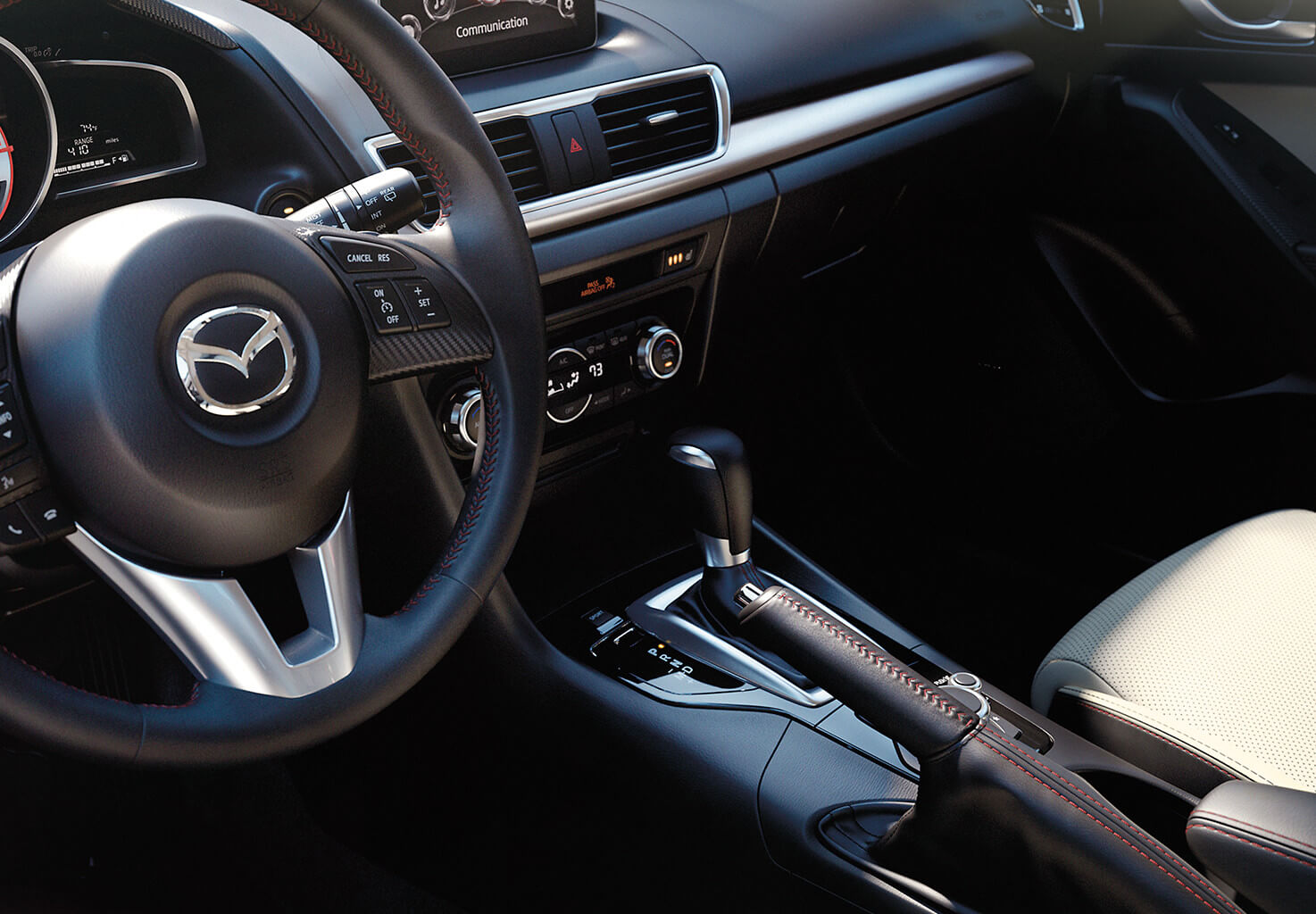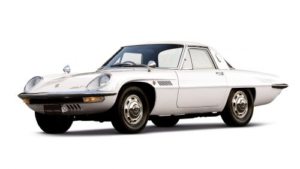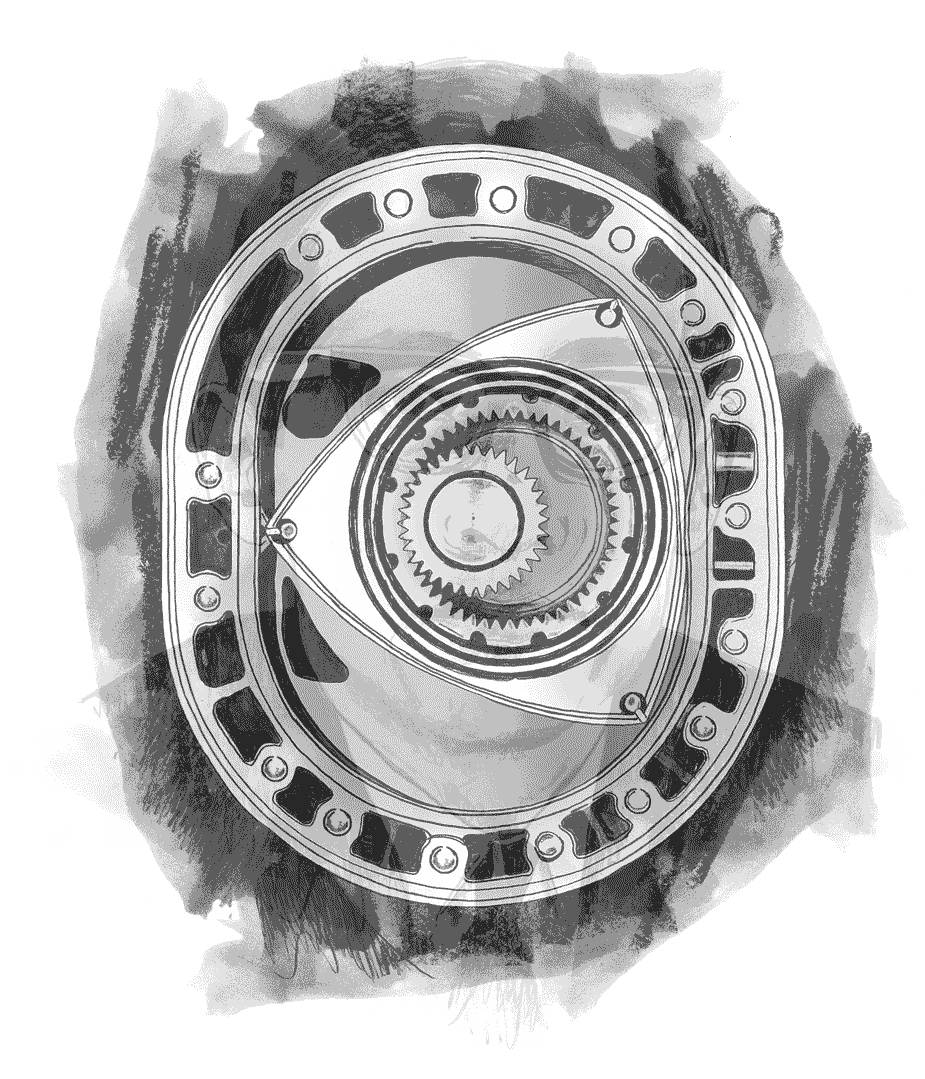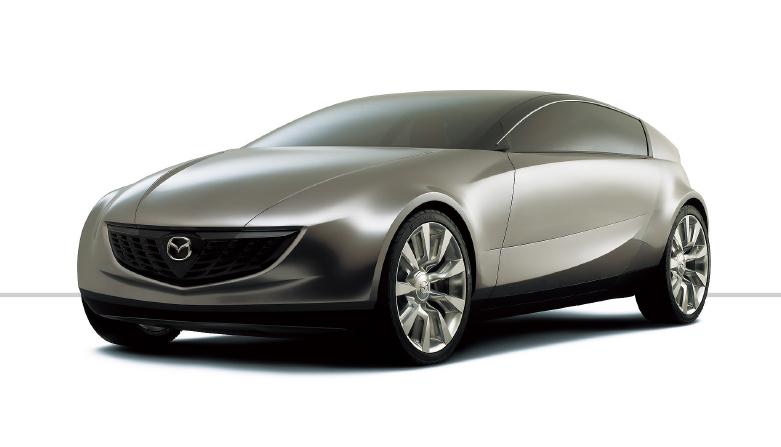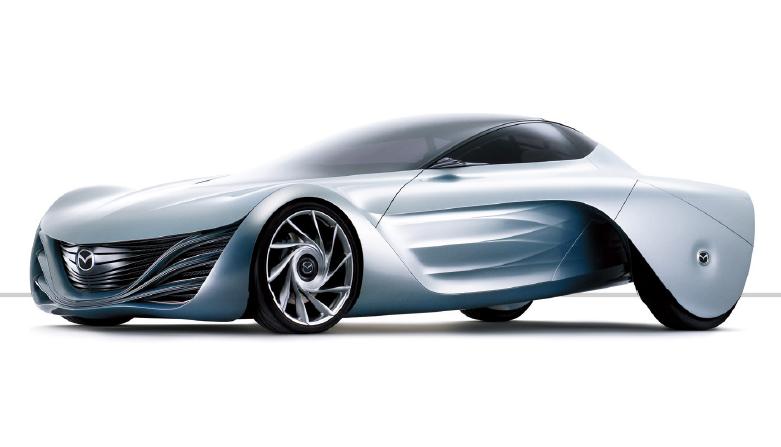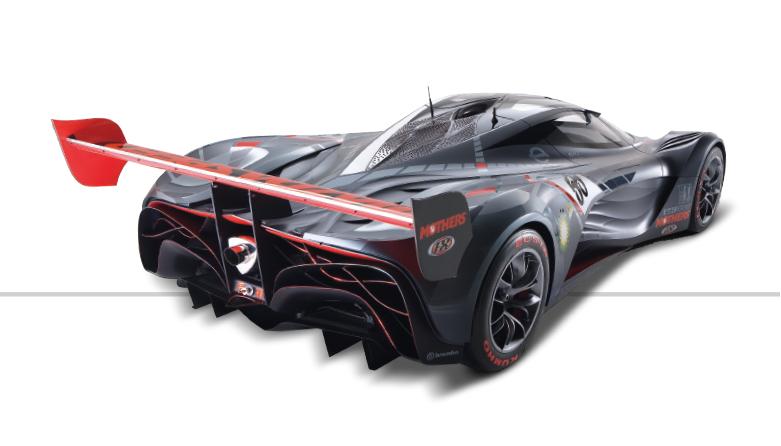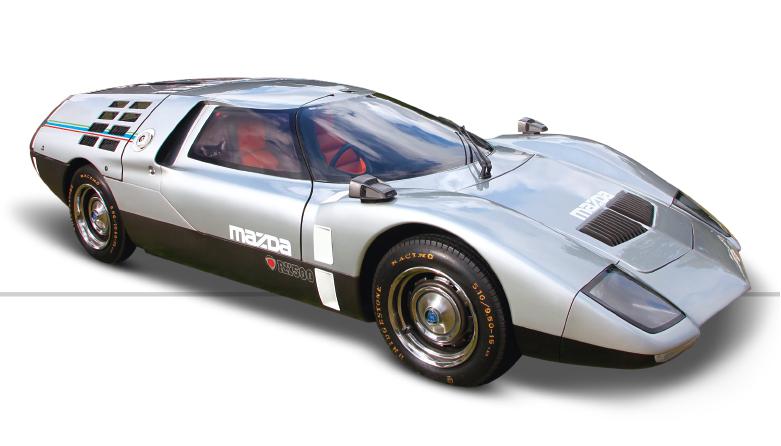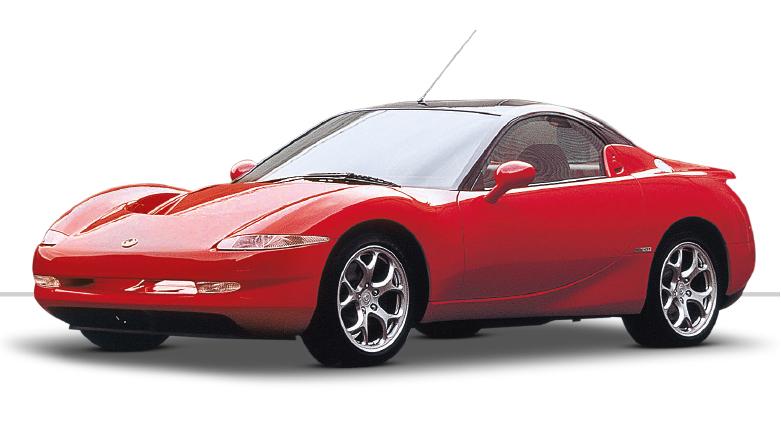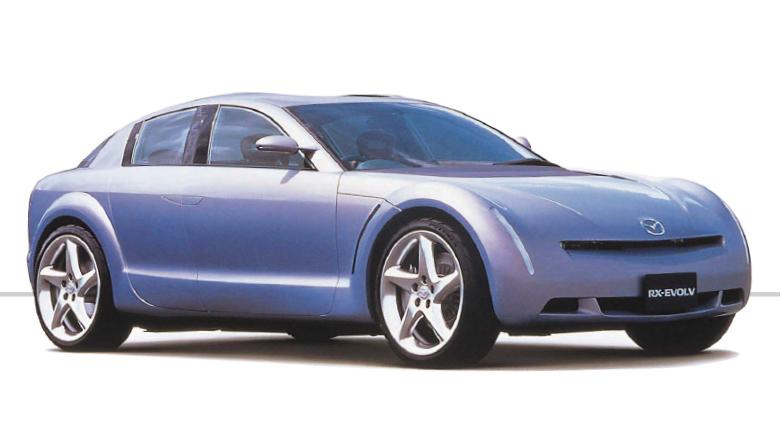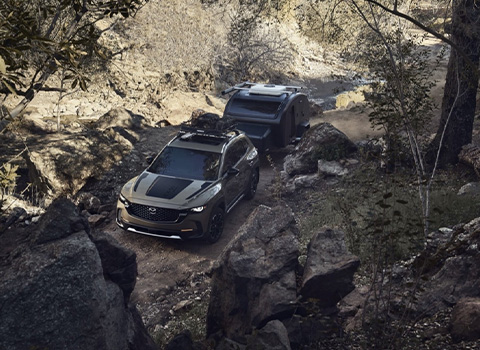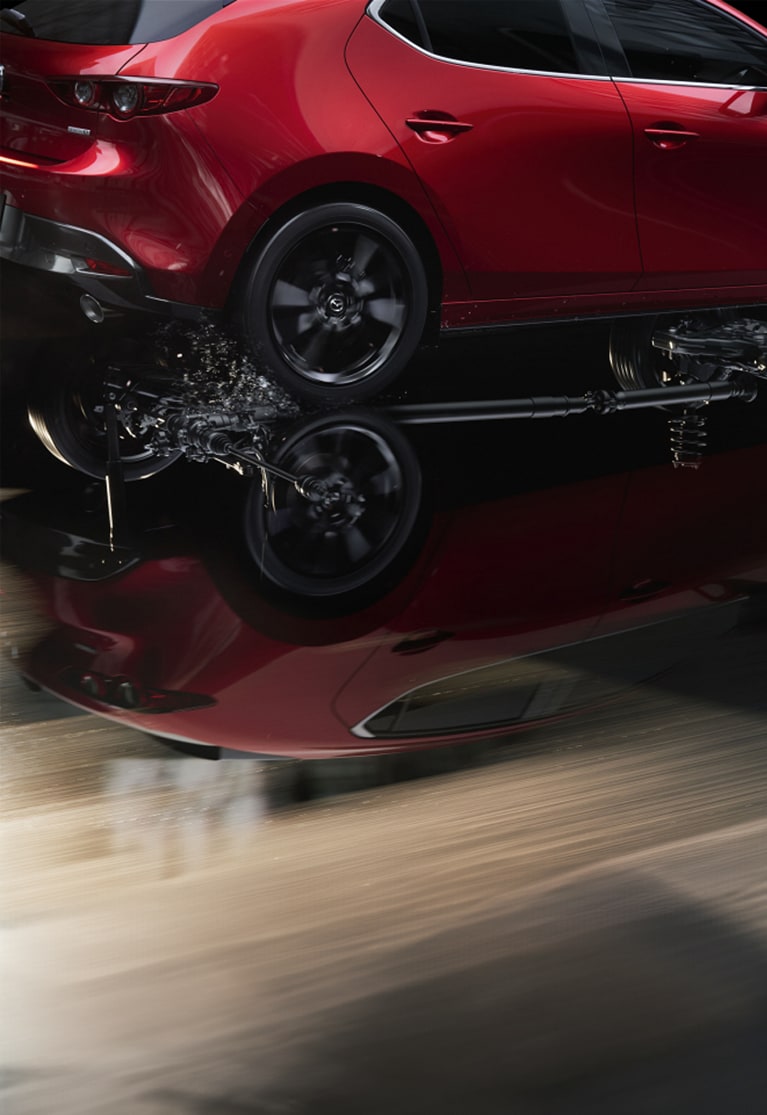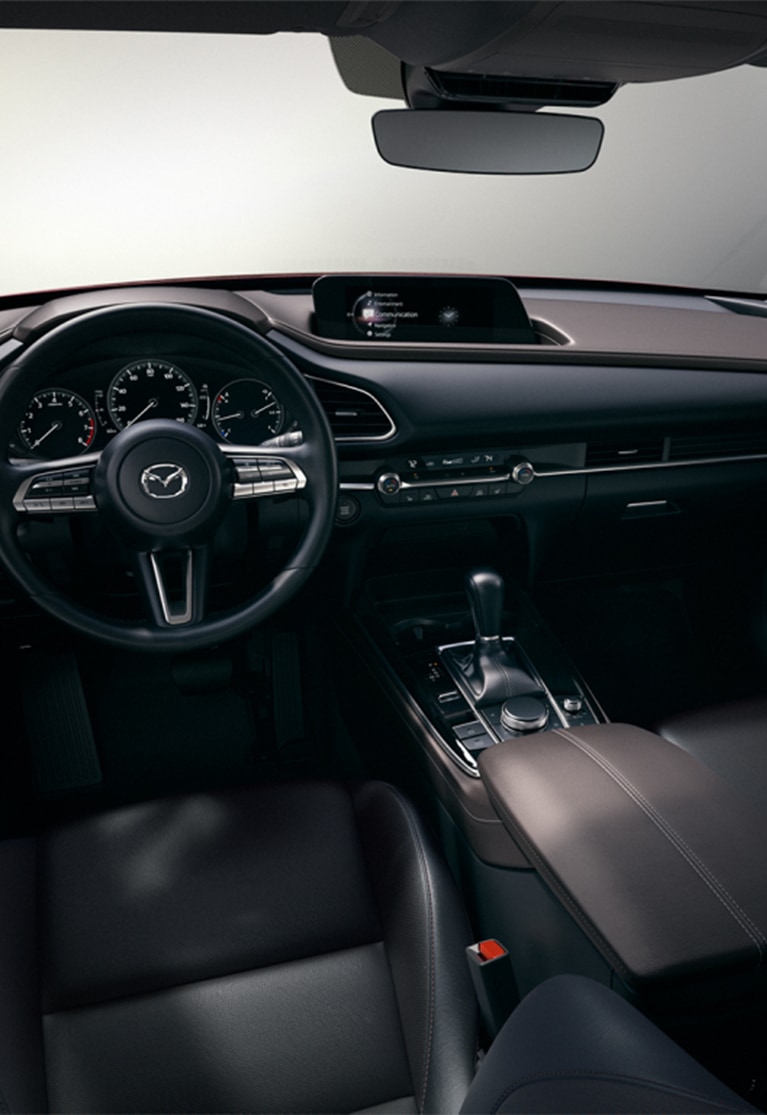Where it all began, the Mazda Cosmo Sport.
50 YEARS OF REVOLUTION
Without the rotary engine, there would probably be no Mazda. And without Mazda, the rotary engine certainly wouldn’t have been in production for nearly 50 years. It was Mazda’s engineers who took Felix Wankel’s unique engine design concept to fruition, and commercial success, five decades ago this year.
A rotary engine is smaller and lighter than a conventional piston engine, with a superior power-to-weight ratio. As it has no reciprocating parts—just a three-sided rotor spinning in a housing—it is quieter and smoother as well. The rotary also offers outstanding performance for a given displacement. This was a big carrot to a company full of car enthusiasts.
Mazda also embraced the rotary in order to be different, a “defy convention” philosophy that continues to this day. In the ‘50s and ‘60s, Japan’s Ministry of International Trade and Industry, the architect of the country’s post-war industrial policy, was trying to make its nascent automotive sector globally competitive. It wanted to streamline the number of carmakers, reasoning that bigger manufacturers would be more likely to compete with U.S. and European heavyweights. Smaller automotive manufacturers such as Mazda were vulnerable to a forced merger.
But a “think different” carmaker, pioneering a bold new type of engine, was much more likely to maintain its independence. Enter the rotary engine: a distinct reason to buy a Mazda—a car that appealed to fans of driving rather than just to those who simply wanted to get from A to B.
The highly lauded, rotary-powered Cosmo Sport (also known as the 110S) of 1967 not only cemented Mazda’s reputation as a small but highly influential carmaker, but guaranteed the company a permanent place in the automotive firmament outside of Japan. Over the following pages, we’ll study the engine’s development, its racing history, and its future.
OVERCOMING ADVERSITY
Kenichi Yamamoto
The project lead engineer’s hard work was duly rewarded: he later became president and chairman of Mazda.
While other carmakers had tried and failed to make the rotary engine a success, Mazda doggedly refused to let the challenges of this complex powerplant get in its way. The recurring problem was scratching—nicknamed “devil’s claw marks”—on the inner surface of the engine casing. This was caused by the apex seals on the triangular rotor juddering, instead of sliding smoothly, against the inner casing. This scoring led to poor seal durability, and caused the early demise of rotary proposals from many other automotive manufacturers.
Mazda’s engineers, led by Kenichi Yamamoto, eventually not only solved the problem with a graphite-aluminum alloy seal, but also overcame other drawbacks, such as excessive oil consumption and a lack of low-end torque. At long last, the rotary engine became feasible in real-world ownership, combining reliability with spectacular power for its size.
This winning combination led to significant sales success for Mazda in the 1970s. Around 100,000 rotary-powered cars were sold in the U.S. in 1972 alone, and the rest of that decade saw half of Mazda’s car production powered by the rotary engine.
NOTABLE ROTARIES
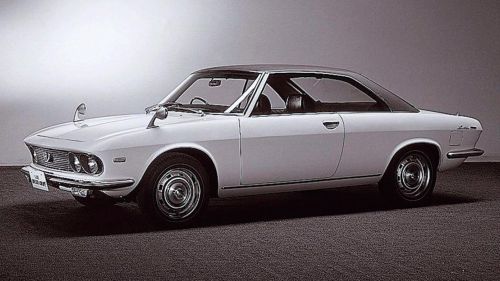
1969 Mazda Luce R130 Coupé
Featuring beautiful Bertone-designed bodywork and impressive performance, this was Mazda’s only front-wheel drive, rotary-engined car. As stunning today as it was when it debuted.

1974 Mazda Rotary Pickup (Repu)
The world’s only rotary-powered pickup truck, the REPU was available solely in the U.S. and Canada and boasted Mazda’s 1.3-liter 13B rotary engine. Fifteen thousand were built—the majority of those in 1974.

1974 Parkway Rotary 26
This minibus was built for the Japanese market and was powered by the 13B rotary engine. The Super-Deluxe model (pictured) could accommodate 13 passengers and the Deluxe model seated 26 people.
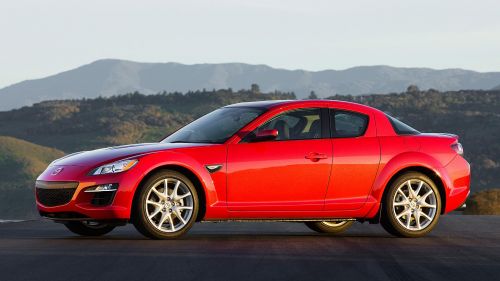
2008 Mazda Rx-8
Penned by current Mazda design boss Ikuo Maeda, the RX-8, which first went on sale in 2003, looks every inch a concept car made for the road, with its futuristic profile and “freestyle” doors.
HOW IT WORKS
Pistons go up and down, rotaries go round and round…
Suck In the intake phase, air and fuel are sucked into the chamber
Squeeze As the three-tipped rotor turns, it compresses the fuel-air mixture
Bang Spark plugs ignite the fuel, forcing the rotor to turn in its power phase
Blow The exhaust gases are then pushed out by the next turn of the rotor
THE DRIVING EXPERIENCE
Driving an immaculate Mazda RX-3 is a great way to experience the rotary engine. This particular 1973 Super Deluxe version features the 1,146cc 12A rotary unit, which puts out around 110 hp—enough to make the RX-3, which weighs less than one ton, very lively indeed. Every sensation is amplified, from the banshee-like wail of the rotary engine at 8,000 rpm to the way the suspension squats down under acceleration and the wood-rimmed steering wheel kicks back over a bumpy road.
The real action begins to happen at 5,000 rpm and keeps happening until long after your cylinder-engine-calibrated brain tells you to shift. The gear lever has a long throw, but it’s a slick, precision movement that’s immensely satisfying when coupled with the mini dance of clutch, brake and throttle-blip evident in a heel-and-toe downshift. It is this feeling of being connected to the driving experience that makes Mazdas such fantastic cars. The racing version of the RX-3 was hugely successful, claiming multiple victories over the Nissan Skyline GT-Rs that had dominated Japanese touring car racing in the early 1970s. A spell behind the wheel of this RX-3 gives you a taste of those triumphs.
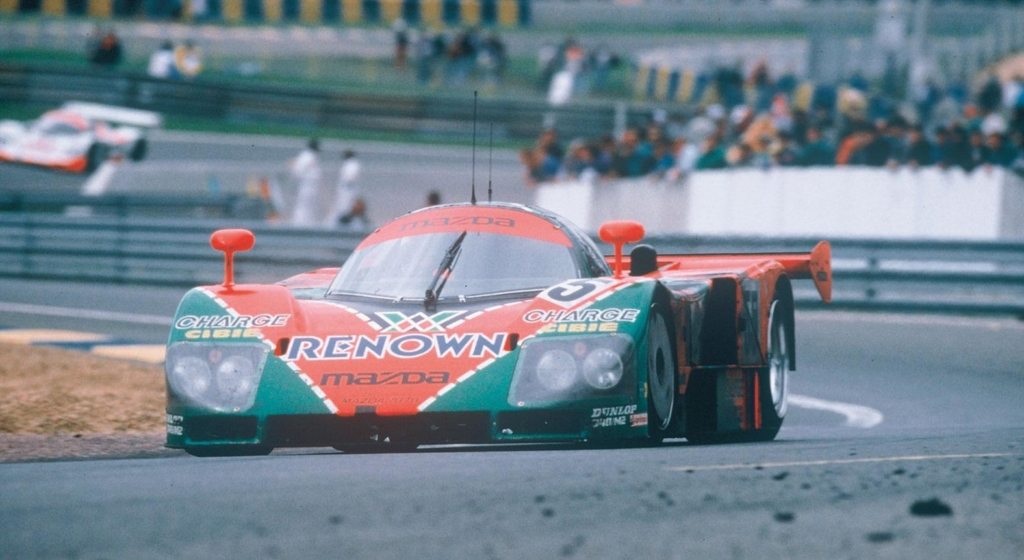
ROTARY ON TRACK
While Mazda’s most famous rotary race win was in the legendary 787B at Le Mans in 1991, there have been numerous rotary racing successes over the years.
DRIFTING
Since the rotary engine was put on hiatus following the end of the Mazda RX-8 production in 2012, it’s been left to another type of motor racing to re-ignite interest in rotary power. Enter the world of the Formula D drifting championship, and meet New Zealand’s drift superstar “Mad” Mike Whiddett.
Previously racing a four-rotor Mazda RX-7 and a three-rotor turbocharged RX-8, Mike’s latest steed features his fastest and most ambitious creation yet: an MX-5 ND with a 2.6-liter twin turbo four-rotor engine putting out a terrifying 1,000 hp. Keep an eye out for Mike this year, as he continues in his quest to take the Formula D championship title. With this car, he’s just got to be in with a fighting chance…
LOOKING TO THE FUTURE
In recent times, the rotary engine’s chief bugbear was its relatively poor fuel economy and higher level of emissions compared with the best modern gasoline or diesel engines, including Mazda’s own SKYACTIV powerplants. But when its potential benefits are so striking—light, compact, smooth, quiet, free-revving—surely there is still a future for the rotary engine?
The rotary may indeed be on the verge of a comeback. As the primary power source, it may be comparatively thirstier as revs rise and fall and loads vary. But at constant and optimal rpm, such as experienced by a generator, it is ideal. Little wonder that Mazda has experimented with using these delightfully small engines—one-third the size of a conventional gas or diesel engine—as on-board power generators, or “range extenders.” In 2013, Mazda demonstrated a tiny single-rotor 330 cc unit generating on-board power for an electric Mazda2. Development continues.
There are other future possibilities. Rotary engines can run superbly on hydrogen, the universe’s most abundant element. It’s also very clean: combusting hydrogen produces only water vapor. Mazda built a number of experimental hydrogen-powered rotaries, including a commercially leased fleet of RX-8s for an environmental study undertaken with the Norwegian government.
Regardless of the technical direction the rotary takes in the future, one thing is more than likely: it will be a thing of beauty. At the 2015 Tokyo Motor Show, Mazda showcased the striking RX-Vision sports car concept (above). With the letters RX traditionally known to preface a Mazda rotary-engined model, the RX-Vision quickened the pulses of rotary enthusiasts worldwide. Mazda merely stated at the time that the rotary remained a symbol of the company’s tirelessly challenging spirit, and that rotary engine research and development continues. But from the company that solved the infamous devil’s claw marks and put rotaries on the world automotive map, who would rule anything out?
| ATTRIBUTE | FULL HYBRIDS (HEVs) | PLUG-IN HYBRIDS (PHEVs) |
| POWER | Relies more on gas engine, with assistance from the electric motor during low-speed driving and acceleration. | Larger battery pack allows for greater all-electric range, with gas-propelled power for extended travel. |
| RECHARGING | Uses regenerative braking and the internal combustion engine to charge the battery while driving. | Charged primarily via an external power source, like a standard, grounded 120V outlet or a charging station. Also charged via regenerative braking and the ICE while driving. |
| RANGE | No significant all-electric range. | Typically can travel up to 15-60 miles on electricity alone. |
| COST | Less expensive upfront costs, potentially more expensive recurring costs, since there is no significant all-electric capacity to offset fuel costs. | More expensive upfront costs, less expensive recurring costs. |
| Test Table | Cost |
| Range | Lorem Ipsem |
 |
Check Engine Light |
 |
Oil Pressure Warning Light What it means: This light indicates that your vehicle's engine has lost normal oil pressure as a result of low oil level, a dirty oil filter, a failed belt or chain, or engine damage. If this light comes on, pull over as soon as safely possible and turn off your vehicle so you can check the engine oil level. If your oil level is adequate but the light is still on after restarting the engine, do not run the engine because it will not run very long without oil pressure and, if it stops itself, the repair price can be substantially higher. Have the vehicle towed to your nearest Mazda dealer or trusted mechanic for a diagnosis. |
 |
Engine Coolant Temperature Warning Light What it means: When the engine temperature warning light comes on, it indicates that your car's engine is low on coolant, running too cold, or running too hot (overheating). This could be caused by a malfunctioning radiator fan or thermostat or a clogged or leaking coolant hose, among other things. If this light comes on, do not run the engine (it will not run very long if overheating and, if it gets too hot the repair price can be substantially higher). Do not attempt to open the coolant reservoir cap while the engine is hot, as this can lead to severe burns. If you're unsure about the cause of the overheating, it's recommended to call for roadside assistance. |
 |
Stability or Traction Control Light What it means: If this light flashes on while you’re driving, your vehicle’s stability and traction control systems are actively working to maintain traction, such as when driving on slippery surfaces like snow or dirty pavement. When this light stays on during normal driving conditions, this usually indicates a problem with the stability or traction control systems (including simple things like a sensor covered in dust that may clear itself to bad sensors or an electronic malfunction that makes the system “unavailable”). This can affect the vehicle's ability to maintain grip on slippery or uneven surfaces as you approach tire limits. Make an appointment to visit your dealership for diagnosis and repair as soon as possible. |
 |
Battery Alert Light What it means: This light indicates that the vehicle's charging system is not functioning properly, and the battery is failing and/or not receiving enough charge to keep it running. This could be due to a failing alternator, a problem with the battery itself (such as being old or damaged), a loose or corroded battery connection, or a broken drive belt. Driving with the battery light on can lead to a situation where the vehicle could lose power and stall, so you should get the issue addressed quickly. |
 |
Anti-Lock Braking System (ABS) Warning Light What it means: This indicates an issue with the vehicle's anti-lock braking system, which could affect its ability to prevent the wheels from locking up during hard braking situations, particularly on slick surfaces. The presence of this light does not mean your brakes have failed, but rather indicates that the ABS feature may not engage when needed, reducing the vehicle's ability to avoid skidding during sudden stops. Continued driving with the ABS light on is not recommended and you should have your vehicle inspected by a Mazda dealer or trusted mechanic. Make an appointment to visit your dealership for diagnosis and repair as soon as possible. |
 |
Tire Pressure Warning Light What it means: When the tire pressure warning light comes on, it means one or more of your tires are significantly underinflated, which could lead to poor traction, increased tire wear, and tire failure if not addressed. It's important to check your tire pressure as soon as possible and inflate any tires that are below the manufacturer's recommended pressure. While this light does not typically indicate an emergency (it’s common if temperatures drop significantly), driving on underinflated tires for an extended period can lead to further complications, so it’s advisable to address the issue promptly. |
 |
Airbag Indicator Light What it means: This signals a potential issue with the vehicle's airbag system — a crucial safety component intended to safeguard occupants during a collision. The light may remain lit or flash, and suggests that the airbags may not deploy during an accident. Should your airbag indicator light turn on, take your car to your dealership as soon as possible, as driving with a faulty airbag system increases safety risks to you and your passengers in the event of a crash. |
 |
Low Fuel Indicator Light What it means: This light signifies that your vehicle's fuel tank is nearly empty and requires refilling as soon as possible. Refuel at the earliest opportunity to avoid being stranded from running out of fuel or damaging fuel system components. |
 |
Washer Fluid Indicator Light What it means: This symbol indicates that your vehicle's washer fluid reservoir is running low and requires replenishing. Refill the washer fluid at your earliest convenience to ensure you can always maintain optimal visibility. |
 |
Seat Belt Reminder Light What it looks like: The seatbelt reminder light typically features an image of a person with a seatbelt across their chest. For an unbelted occupant it is illuminated in red. What it means: This light means that the driver or one or more passengers have not fastened their seatbelts. This warning light may be accompanied by a chime or a beep to further alert the vehicle occupants of the need to buckle up for safety. Many vehicles show belts for each seat with green for a buckled occupant, red for unbuckled, and amber if a sensor detects an unusual load or unlatched seatback. |
 |
Security Indicator Light What it means: If your vehicle is equipped with an anti-theft system, you may notice this symbol blinking steadily when the security system is set. Should the symbol be lit but not blinking and your car refuses to start, it's a sign that the immobilization system has kicked in, either due to a perceived security threat or a malfunction. Conversely, if the symbol remains lit but the car operates as usual, it indicates a fault within the security system that requires attention. |
 |
Transmission Temperature Warning Light What it means: This light is a crucial warning that the transmission needs to cool down to prevent serious damage. If you see this light, it's advisable to pull over safely and let the transmission cool down before continuing (which may mean letting the car idle in park, not turning it off). If the warning light comes on again when you do begin driving again, take your vehicle to your dealership immediately or call a tow truck, as there could be an issue with the transmission itself. |
 |
Fog Lamp Indicator Light What it looks like: The fog lamp indicator light is typically symbolized by a lamp or beam with lines slanting downwards and a wavy “S” line in the downward slanted lines (without the “S” line, it’s a low-beam headlight). Usually, this is illuminated in green, amber, or yellow. An icon like that shown but pointing to the right is a rear fog-lamp indicator, almost always amber in color. What it means: When the fog lamp indicator light activates, it signifies that your vehicle's fog lamps are in use – not that there is an issue. These lights are designed to enhance road visibility in foggy or misty conditions by casting a wide, low beam beneath the fog, while a rear fog lamp is designed to make the rear of your car easier to see in heavy fog or spray. |
 |
Automatic Shift Lock or Engine Start Indicator Light What it looks like: The automatic shift lock or engine start indicator light often appears as a shoe inside of a circle and is often either green or blue when activated. What it means: This light means that the vehicle's automatic transmission is locked in park or neutral until a specific action is performed. This safety feature prevents unintentional shifting of the vehicle out of park. If you notice this light, ensure you follow the correct procedure to start your vehicle or shift from park — typically, by pressing the brake pedal firmly. |
 |
Lane Departure Warning Light What it means: If this light is activated, it indicates that the vehicle's lane departure system has been engaged or has detected the car moving out of its lane without signaling. Lane-keeping systems often use the same indicator. |
 |
Brake Warning Light What it looks like: The brake warning light usually appears as an exclamation mark inside a circle, sometimes accompanied by the word "BRAKE," illuminated in red. Do not confuse this with the parking brake indicator (often a P in the circle) that shows the vehicle’s foot, hand, or electrically operated parking brake is on. What it means: This signals a potential issue within the vehicle's braking system, which could range from low brake fluid levels to a malfunction in the brake system components. Your vehicle may not be safe to drive until the issue is addressed. Immediate actions should include checking the brake fluid level and ensuring it's at the recommended level. If topping up the fluid turns off the warning lamp and brake function is normal, it is possible the brake pads are worn and need to be replaced shortly. Make an appointment to have the car checked and serviced. If the light remains on after topping up the fluid or if you notice any change in braking performance, have your car towed to your dealership. |
1. These icons and their meaning can vary from vehicle to vehicle, from automaker to automaker.
2. Your best source of information will be your Owner’s Manual or a qualified service specialist.
3. These warning lights shown and described are of a general nature. They are not necessarily Mazda warning lights and the descriptions are not necessarily of Mazda features and warning icons.





















